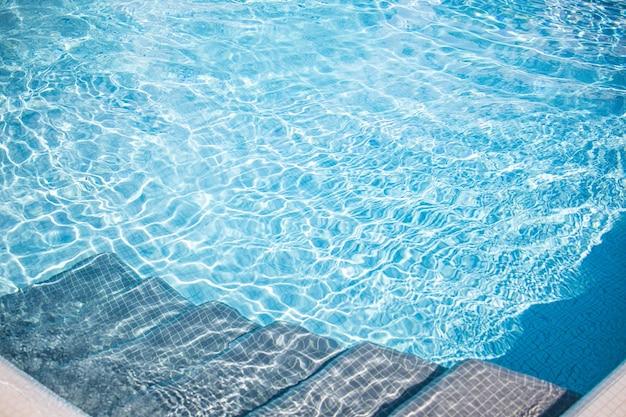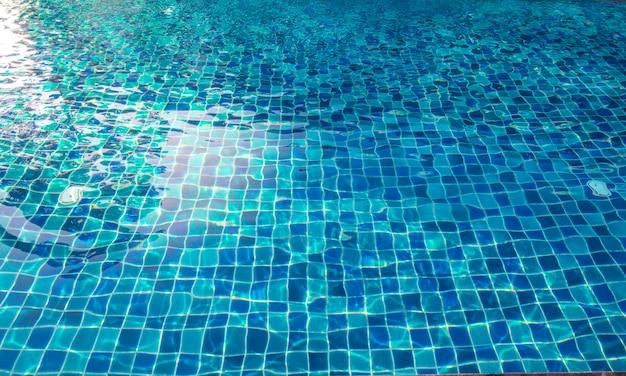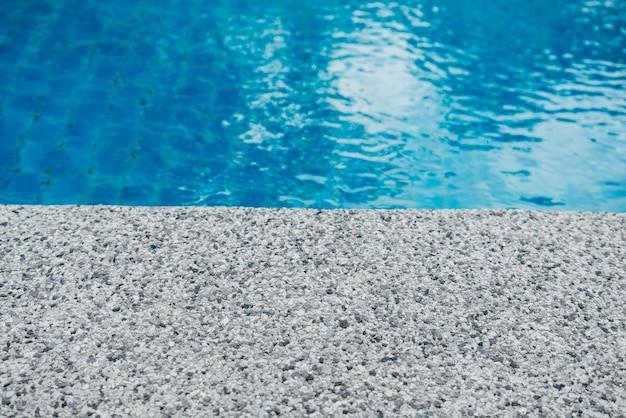Are you tired of looking at your old, worn-out pool? Has it lost its shine and become difficult to maintain? If the answer is yes, it might be time for a pool resurfacing!
There are various pool resurfacing options available, including plaster, pebble, and diamond brite. But what’s the best material to use? And how much does resurfacing cost?
Don’t worry; we’ve got you covered! In this comprehensive guide, we’ll answer all your questions and provide you with all the information you need to know about resurfacing your pool.
First off, it’s essential to know when your pool needs resurfacing. Signs such as cracks, chipping, and discoloration signify a need for resurfacing. So, keep an eye on these things to keep your pool in tip-top shape.
Next, it’s crucial to choose the right material. Diamond brite is a popular choice due to its durability and long-lasting properties, but plaster and pebble are also excellent choices. The cost of resurfacing varies based on the chosen material and your locality.
Now that you have a basic understanding let’s dive deeper into each of these topics to help you make a more informed decision about resurfacing your pool. Keep reading to find out more!
Pool Resurfacing Options
If you’re looking to resurface your pool, there are several options available to you. Each option has its own pros and cons, so it’s essential to weigh them carefully before choosing the one that fits your needs and budget best. Here are some of the most popular pool resurfacing options:
Plaster
Plaster is one of the most common and affordable pool resurfacing options. It’s a mixture of cement, water, and marble dust that creates a smooth, durable, and waterproof surface. Plaster comes in different colors, and you can add dyes to create a customized look. Here are some of the pros and cons of plaster:
Pros
- Affordable
- Durable
- Smooth surface
- Easy to customize
Cons
- Prone to cracking and staining
- Requires frequent maintenance
- Rough on the skin
- Short lifespan compared to other options
Pebble Aggregate
Pebble aggregate is a mix of small pebbles, cement, and water that creates a textured and slip-resistant surface. It’s a popular choice for those who want a natural-looking pool and don’t mind spending a bit extra. Here are some of the pros and cons of pebble aggregate:
Pros
- Long-lasting
- Slip-resistant
- Comes in various colors and sizes
- Natural-looking
Cons
- Expensive
- Rough on the skin
- Can be hard to clean
- Installation is time-consuming
Tiles
Tiles are an elegant and popular choice for pool resurfacing. They come in a variety of shapes, sizes, and colors, allowing you to create a customized look that complements your backyard. Here are some of the pros and cons of tiles:
Pros
- Durable
- Versatile
- Easy to customize
- Smooth surface
Cons
- Expensive
- Installation is time-consuming
- Prone to cracking
- Not slip-resistant
Exposed Aggregate
Exposed aggregate is a mixture of concrete and pebbles that creates a textured and slip-resistant surface. It’s a popular choice for those who want a budget-friendly and low-maintenance option. Here are some of the pros and cons of exposed aggregate:
Pros
- Affordable
- Slip-resistant
- Easy to maintain
- Comes in various colors and sizes
Cons
- Prone to cracking
- Rough on the skin
- Not as durable as other options
- Limited customization options
Choosing the right pool resurfacing option can be overwhelming, but with the information provided above, you’re now equipped with the necessary information to make an informed decision. Whether it’s plaster, pebble aggregate, tiles, or exposed aggregate, the choice ultimately comes down to your budget, personal preferences, and maintenance needs. Regardless of what you choose, a freshly resurfaced pool will breathe new life into your backyard and provide many years of enjoyment for your family and friends.
Gunite Pool Resurfacing Near Me
If you have a gunite pool and it’s showing signs of wear and tear, you might be wondering where to find quality resurfacing services near you. Look no further than your surrounding area. Here are some tips to help you find reliable gunite pool resurfacing near you:
1. Check Reviews Online
The internet offers plenty of online platforms where customers can write their feedback. Visit review sites such as Yelp to find out what other pool owners in your area have to say about local pool resurfacing services. Take note of the feedback, and choose the providers with higher ratings and more positive reviews.
2. Ask Friends and Neighbors for Referrals
Inquire from friends, family, or neighbors, especially those who own a gunite pool that has recently been resurfaced. Ask them who they used for the job and if they’re happy with the results. This is an excellent way to get honest feedback and know what to expect if you decide to choose the same provider for your project.
3. Look for the Proper Licensing and Insurance
Ensure that the pool resurfacing company you are considering is licensed to work in your state. Licensed professionals have gone through the required training and have the necessary skills to perform the job. Additionally, check if the company has insurance coverage for their employees and any liability that may arise during the project.
4. Verify the Communication Skills
The first interactions you have with a potential pool resurfacing company will give you an idea of its communication skills. Ensure that you choose a provider that is transparent and direct when answering your questions. Avoid any companies that are hesitant to answer your inquiries.
5. Get a Detailed Estimate
Before getting any pool resurfacing services, ensure that you get a detailed estimate of the cost. Your chosen provider should provide you with a line-by-line explanation of what each cost item covers. This way, you know precisely what you’ll pay for and prevent the possibility of being charged extra fees later.
Resurfacing your gunite pool is an essential maintenance step to extend its longevity and ensure it stays in good shape. Finding reliable and quality gunite pool resurfacing services doesn’t have to be a daunting task; with these tips, you can quickly find a provider who will exceed your expectations.
What is the Best Material for Resurfacing Your Pool
Resurfacing your pool is an important investment in both the appearance and the value of your property. It’s a chance to add new life to an old pool, fix any leaks or cracks, and create an enjoyable swimming experience for you and your family. Choosing the best material for resurfacing your pool can be a daunting task, but we’ve got you covered. Here are some of the most popular options:
1. PebbleTec
PebbleTec is a popular choice for pool resurfacing due to its durability, aesthetic appeal, and low maintenance requirements. Made from natural materials, it provides a unique, textured finish that looks great and lasts longer than traditional plaster. It also resists stains, chemicals, and fading, making it an ideal choice for outdoor pools.
2. Plaster
Plaster is the most common and affordable option for pool resurfacing. It’s ideal for those on a budget and can last up to ten years if maintained properly. However, plaster tends to stain easily and can crack over time, requiring frequent repairs.
3. Tile
Tile is an elegant, long-lasting option for resurfacing your pool. It provides a clean, modern look and is available in a variety of colors and designs. However, tile is the most expensive option and can be prone to chipping and cracking over time.
4. Fiberglass
Fiberglass is a popular choice for those looking for a quick and easy resurfacing option. It’s durable, easy to clean, and resists algae growth, making it ideal for pool owners who don’t have time for frequent maintenance. However, it’s not as customizable as other options and may require a professional for installation.
In conclusion, the best material for resurfacing your pool depends on your budget, personal style, and maintenance requirements. PebbleTec and plaster are affordable and low maintenance, while tile and fiberglass are more expensive but provide a high-end, long-lasting finish. Consider your options carefully and choose the one that fits your needs and budget best.
What is the Best Pool Resurfacing Material
Pool resurfacing is an essential process that every pool owner should be familiar with. It involves applying a fresh layer of material to the pool surface to restore its structural integrity, aesthetic appeal, and functionality. Choosing the right pool resurfacing material can be a daunting task, given the numerous options in the market. However, in this subsection, we will discuss the best pool resurfacing materials to help you make an informed decision.
1. Pebble Tec
Pebble tec is one of the best pool resurfacing materials in the market. This material consists of tiny pebbles that are mixed with cement, creating a durable and visually appealing surface. The pebbles come in various colors, giving you a wide range of options to choose from. Also, this material is non-slip, making it ideal for pool areas to prevent accidents.
2. Quartz
Quartz is another great option for pool resurfacing. Like pebble tec, it consists of a mixture of tiny pebbles and resin, making it durable and resistant to stains and cracks. Besides, it has a smooth surface, making it comfortable to walk on. Quartz also offers a wide range of color options to match your preference.
3. Tile
Tiles have been a popular pool resurfacing material for ages. They are known for their aesthetic appeal and durability. The tiles come in various shapes, colors, and patterns, giving you unlimited options to choose from. Additionally, tiles are easy to clean, making them low maintenance.
4. Plaster
Plaster is the most common pool resurfacing material. It is made by mixing cement, sand, and water, creating a smooth and affordable pool surface. The material comes in various colors, but it is prone to cracking and staining. However, with proper maintenance, plaster can last for many years.
Key Takeaways
- The best pool resurfacing material depends on your preference, budget, and maintenance needs.
- Pebble tec, quartz, tiles, and plaster are the most common pool resurfacing materials.
- Pebble tec and quartz are durable, visually appealing, and non-slip, but they are expensive.
- Tiles are aesthetic, durable, and low maintenance, but they are expensive to install.
- Plaster is affordable, but it is prone to staining and cracking and requires regular maintenance.
In conclusion, choosing the best pool resurfacing material can be overwhelming, but with the right information, it is easier to make a well-informed decision. By considering factors such as durability, maintenance, and aesthetic appeal, you can find the best material that suits your needs.
How Much Does it Cost to Resurface Around a Pool
Many people consider resurfacing their pool to increase its lifespan, improve its appearance, and restore its functionality. However, the first question that comes to their minds is how much it will cost to resurface their pool. The cost to resurface a pool depends on several factors, such as the size of the pool, type of materials used, and labor costs. In this section, we’ll discuss the different factors that affect the cost of resurfacing a pool and educate you on what to expect.
Factors that Affect the Cost of Resurfacing a Pool
-
Pool Size: The size of your pool plays a significant role in determining the cost of resurfacing. Larger pools require more materials and labor, meaning they will cost more to resurface.
-
Type of Materials Used: The type of materials used for resurfacing also affects the cost. The costlier the material, the higher the overall cost of resurfacing. A few examples of pool resurfacing materials include Diamond Brite, PebbleTec, and marcite.
-
Labor Costs: Labor costs vary depending on the contractor hired, their level of experience, and how long it takes to complete the job. Labor costs usually make up the bulk of the expense, so it’s essential to choose a reputable and experienced contractor.
-
Location: The location of your pool can also affect the cost of resurfacing. If your pool is in a remote area, it may cost more to have it resurfaced due to the transportation costs for equipment and materials.
Pool Resurfacing Costs Estimate
On average, the cost to resurface around a pool ranges from $4,000 to $10,000. However, the price can go up if your pool is larger, or you have opted for pricier materials. Below is a rough estimate of the costs you can expect for resurfacing a pool of various sizes:
- A small pool (up to 400 square feet) can cost $4,000 to $5,500.
- A medium pool (400 – 600 square feet) can cost $5,500 to $7,500.
- A large pool (over 600 square feet) can cost $7,500 to $10,000.
It’s important to note that these estimates are not definitive and may vary depending on the contractor, your location, and several other factors. Always obtain a written estimate before hiring a contractor to resurface your pool.
In conclusion, resurfacing your pool increases its lifespan, improves its appearance, and restores its functionality. The cost to resurface around a pool depends on several factors, including pool size, type of materials used, labor costs, and location. There’s a range of pool resurfacing costs, depending on the size of the pool, and the cost of materials used. Before hiring a contractor, ensure they have experience and a good reputation. Resurfacing your pool is a significant investment and one you want to be sure lasts for many years.
How can you tell if your pool needs resurfacing
As a pool owner, one of the essential maintenance tasks you must carry out is to keep your pool in top condition. Resurfacing your pool when it needs it is vital to prevent further damage and ensure its longevity. But, how do you know when your pool needs resurfacing? Here are some signs to look out for:
Discoloration
One of the most obvious signs that your pool needs resurfacing is if you notice discoloration. If you notice that your pool’s surface color has faded and it no longer looks as vibrant as it used to, it could be a sign that the surface material is deteriorating.
Roughness
If the surface of your pool feels rough or jagged to the touch, it could be a sign that the plaster or other resurfacing material has worn down. A rough texture can be uncomfortable for swimmers and may even cause minor injuries.
Stains
Stains on your pool’s surface could indicate that the material is corroding. If you notice discoloration in your pool, you might want to try scrubbing the area with a pool brush and chlorine but if that doesn’t work, resurfacing your pool might be necessary.
Cracks
If you notice significant cracks in your pool’s surface, it might require immediate attention. Cracks that are left unchecked can cause more significant damage to your pool and increase the likelihood of leakage, which can be both costly and dangerous.
Age
The age of your pool can also determine if renovation is necessary. Even with regular maintenance practices, your pool can only stand up to wear and tear for so long. Keep track of when your pool was last resurfaced, and you should have a good idea of when it will need servicing again.
Key Takeaway
Regular pool maintenance is essential to avoid costly repairs down the line. Keep an eye out for any discoloration, roughness, stains, cracks, or signs of aging. If you notice any of these signs, contact a pool resurfacing professional to assess your pool’s condition and offer solutions. It’s always better to deal with potential problems early and avoid any significant damage to your pool in the future.


